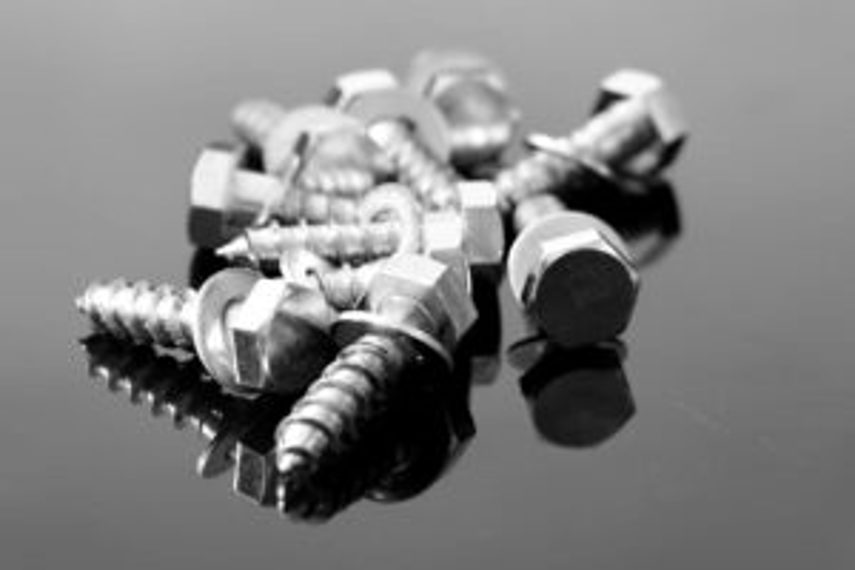
Poka-yoke is a Japanese lean manufacturing strategy that aims to eliminate mistakes and defects during the manufacturing process – a simple yet effective quality control tool that can be used to reduce errors in almost any industry.
Here we give you the all-you-need-to-know practical guide to poka-yoke for SME manufacturers.
What is poka-yoke?
Poka-yoke is a Japanese continuous improvement strategy based on the concept of mistake-proofing – or preventing errors before they happen. In other words, poka-yoke is based on preventative actions that identify and eliminate mistakes and the causes of variations and defects in manufacturing operations.
The term poka-yoke originates with the Japanese baka-yoke, meaning ‘idiot-proofing’ – which was deemed insulting to staff and changed to poka-yoke, which means ‘mistake-proofing’.
The application of poka-yoke methods is seen in many preventative safety measures in everyday use – such as electrical safety switches that cut power when systems are overloaded, or microwave ovens and clothes dryers that switch off as soon as their doors are opened.
Who invented poka-yoke?
Shigeo Shingo, a Japanese industrial engineer, is the inventor of the poka-yoke approach. While visiting a manufacturing plant in the early 1960s, he noticed that employees had overlooked the addition of springs into a basic on/off switch, resulting in faulty parts being manufactured and shipped.
From observing that simple human error, Shingo began looking at ways to improve and redesign the process to ensure the operation couldn’t proceed until the spring was inserted into the switch.
 Poka-yoke, invented by Shigeo Shingo, is a lean method designed to eliminate mistakes – and therefore defects – in manufacturing
Poka-yoke, invented by Shigeo Shingo, is a lean method designed to eliminate mistakes – and therefore defects – in manufacturing
Why is poka-yoke important for manufacturers?
Poka-yoke is an important part of the lean manufacturing system, whose main purpose is waste elimination, continuous improvement and adding value. The goal is to solve customer problems while reducing manufacturers’ costs, and lean concepts like poka-yoke are simple tools that are easy to implement.
Manufacturers employ poka-yoke techniques to improve product design and product manufacturing processes. The continuous improvement process helps eliminate human and mechanical errors, gets the products right the first time, and reduces the cost of trial-and-error.
Because poka-yoke is flexible, it’s a cost-effective lean manufacturing technique for manufacturers to use as part of their mistake-proofing activities. Manufacturers can prevent process errors at little cost, while increasing the quality and reliability of their products because there are no defects.
What are the three types of poka-yoke?
The three types of poka-yoke used to detect errors are contact, fixed value and motion-step:
1. The contact method of poka-yoke
The contact method of poka-yoke identifies defects through physical attributes. This method uses a sensory device that detects abnormalities in a product's shape, size, colour, weight, or dimension. The device alerts either a person or a machine to the current state of the product.
The contact method is useful in situations involving fast repetition, infrequent production, or environmental problems like dust, noise or poor lighting – in other words, anything that distracts workers or leads to mistakes.
Contact method solutions suit situations where product failure occurs when parts are incorrectly assembled. Error-proofing includes measures like ensuring parts are correctly positioned before assembly starts, and using interference and matching locator pins or limit and proximity switches.
2. The fixed value method of poka-yoke
The fixed value method in poka-yoke ensures a set number of movements are used in processes where an activity is repeated several times. This method often involves basic techniques that allow workers to easily track the frequency with which an activity has been performed, and ensure quality standards are met.
For example, if an employee is responsible for placing six screws on a product before passing it down the production line, the activity of inserting screws is performed to a fixed value – which is six times. A fixed value poka-yoke method addresses this by ensuring the exact quantities to complete the task are provided. By placing the screws in containers of six, the employee can easily ensure the process is completed correctly by using up the screws in the container.
3. The motion-step method of poka-yoke
Motion-step in poka-yoke determines whether prescribed steps are completed in order. Much like the fixed-value method, motion-step is helpful where several different activities are performed by an individual operator. The main difference from fixed value is that it deals with activities performed in a set sequence.
Motion-step therefore prevents and detects errors arising from an incorrect sequence of events. Devices detect whether each motion is performed, alerting workers when a step is skipped and enabling them to remedy the error.
 An example the poka-yoke method is when an employee needs to affix six screws to a product: by supplying containers of exactly six screws, the employee knows when their activity is complete
An example the poka-yoke method is when an employee needs to affix six screws to a product: by supplying containers of exactly six screws, the employee knows when their activity is complete
What are the two poka-yoke methods used to prevent errors?
Poka-yoke operates under two different methods of error prevention – control and warning:
- The first, control, prevents mistakes being made. Control aims to make it mechanically impossible for mistakes to occur. This can be as simple as the spell-check function on computer or mobile devices, but is often a safety feature such as the mechanisms that stop automatic doors closing on a person. Another example is when appliances (e.g. washing machines, microwaves) switch off when the door is opened.
- The second, warning, alerts workers before an error is made. Warnings can be a sound, colour, or message. For example, when deleting an image from a mobile phone, a message appears asking if you want to delete the image or send it to the recycle bin.
What are the 6 steps of poka-yoke mistake-proofing?
Before fully implementing poka-yoke, it’s important to assess whether implementing poka-yoke measures will work.
You can do this by evaluating to see if a specific error can be prevented and making sure the error-proofing activities chosen don’t slow down the manufacturing process.
The following six steps can be used to evaluate the system prior to implementation:
1. Identify the problem
Humans make mistakes, so a few mistakes are to be expected. However, ongoing errors indicate a problem that may be either human error or an issue with processes or equipment. Observe the process to identify where a problem is occurring.
2. Find the source of the problem
Once the ‘where’ has been identified, determine the why by using the five ‘whys’. Ask and answer five questions, for example:
- Why did the conveyor belt stop? An electrical surge caused a fuse to blow.
- Why did the power surge occur? The safety switch failed.
- Why did the safety switch fail? The cable had been damaged.
- Why was the cable damaged? It had not been fastened
- Why had the cable not been fastened? Human error.
These 5 ‘whys’ help to identify the problem, the symptoms of the problem, and finally the problem’s possible – and actual – cause.
3. Determine the poka-yoke method to use
Decide on the best poka-yoke control for the problem you’ve identified. Choose the one that prevents the manufacturing process from continuing until a vital step is completed, or install a poka-yoke alert that tells the operator something needs to happen before the process continues.
4. Determine the right type of poka-yoke to use
Select which of the three poka-yoke error detection methods is appropriate for the task. Remember – these are:
- Contact – identify errors using physical attributes such as shape or size.
- Fixed value – alert workers when a specific number of actions or moves aren’t made.
- Motion step – ensure a correct sequence of events is followed before an activity continues.
5. Train your staff
The key to successful implementation of any business or manufacturing improvement method lies with effective staff training. Training helps employees understand the principles and benefits of poka-yoke, and ensures that operators are confident in applying the necessary methods.
6. Measure and review performance
Finally, don't forget to measure the success of the poka-yoke methods you've implemented. Observe and review the operation to determine if implementation has had the desired results. Look for other errors and issues that may impede production, and seek opportunities for continuous improvement.
 The six steps of poka-yoke – explained above – give you a framework for implementing this system of improvement in almost any manufacturing business
The six steps of poka-yoke – explained above – give you a framework for implementing this system of improvement in almost any manufacturing business
What are the advantages of poka-yoke?
The primary advantage of implementing poka-yoke as a tool for lean manufacturing is that it reduces mistakes and therefore defects. On top of this, the poka-yoke process is generally easy, inexpensive, and can be aligned with existing processes.
Since poka-yoke aims to reduce mistakes to zero (or as close to zero as possible) another benefit is greater safety for employees and consumers. This in turn builds greater confidence among workers, management and stakeholders.
However, poka-yoke tools provide numerous benefits other than greater safety, such as lower costs, increased flexibility, and greater commitment to continuous improvement:
- Component errors are minimised to reduce the occurrence of common failures that affect operations and reliability.
- The correct set-up of poka-yoke helps manufacturers avoid expensive, time-consuming, and ineffective processes.
- Operations errors are reduced because they no longer rely solely on human knowledge and proficiency for successful execution.
- Processing operations and activities are optimised for greater production efficiency through a reduction in machinery and equipment errors.
- Measurement and quality assurance techniques executed through poka-yoke methods are essential for identifying component and process errors that could otherwise go undetected.
The reduction or prevention of errors – and the increased confidence that comes from this – can result in superior products, better customer satisfaction, enhanced brand loyalty, and increased profits. Implementing poka-yoke saves both time and resources by having the work done right the first time.
What are the disadvantages of poka-yoke?
As with any new improvement method, poka-yoke can have some disadvantages.
One of the main issues comes with initial resistance to change from employees or decision-makers. The need to justify investment in new processes and the time required to implement and realise benefits can be a challenge. This can be compounded if the methods implemented are inappropriate or ineffective.
However, these challenges can be relatively easy to overcome through effective training of employees and by encouraging staff to be involved in the process of determining the right methods and approaches.
 You’ll find many examples of poka-yoke features in everyday products – from treadmills to blenders, cars, power outlets and child-safe medical packaging
You’ll find many examples of poka-yoke features in everyday products – from treadmills to blenders, cars, power outlets and child-safe medical packaging
Poka-yoke product examples
Examples of poka-yoke are evident in many products used in modern everyday life. Some examples are:
- Automotive safety features. Motor vehicles come equipped with many poka-yoke safety features like automatic braking systems, cameras and radars to keep drivers and passengers safe on the road.
- Pharmaceutical goods. Tamper-proof packaging and child-safe lids on pill bottles are poka-yoke safety measures to prevent product interference or accidental consumption of potentially life-threatening medicines.
- Household appliances. Washing machines, dryers, dishwashers, microwaves, blenders and many other household electrical appliances all have mechanisms to prevent unsafe operation.
- Sporting equipment. Exercise equipment such as treadmills come equipped with safety clips that – when pulled – will stop the treadmill if the exerciser trips of falls.
- Leak-proof drink containers. Travel mugs and water bottles often come with press and hold buttons to enable users to drink from them. This poka-yoke mechanism prevents contents from leaking or spilling when the container is not being used.
- Power outlets. Many electrical plugs are designed to only be inserted one way – an example of the contact method of poka-yoke.
Can SMEs use poka-yoke for manufacturing?
SMEs are well-placed to use the poka-yoke method, since this technique does not necessarily demand the use of high-cost technology. There are easy ways of introducing poka-yoke error-proofing into manufacturing organisations, and mechanisms can be developed over time that take advantage of new technology as it becomes accessible.
When implementing this method, don’t forget that having your staff on board is essential – and that they are one of your best resources for process improvement. Communicating with staff and seeking feedback from operators is a simple way to find and eliminate steps that are error prone. Operators are the people best positioned to recognise potential issues and provide input on the appropriate response to facilitate corrective action.
Need help managing your inventory?
- Watch an inventory optimisation demo. Learn how Unleashed helps you track key inventory data in real-time, forecast sales demand, and set optimal stock levels to save you precious time and money.
- Sign up for a free 14-day trial. Discover first-hand how Unleashed helps you improve productivity, master the purchasing process, and boost efficiency with a risk-free two-week trial.
- Chat with an expert to assess your needs. Are you ready to take your business to the next step? Book a free chat with one of our in-house experts for an honest discussion about your stock optimisation requirements.
More posts like this
- What is Omnichannel eCommerce? Definition, Benefits & 4 Tips - The term omnichannel is a popular eCommerce buzzword, but what exactly is omnichannel eCommerce, and why is it important? We cover these questions and...
- Three Trade Barriers That Affect Your Business - Trade barriers are generally a government-imposed restraint on the flow of international goods or services. The most common trade barrier is a tariff....
- What is Ecommerce Software? Automation Guide - Ecommerce software allows online businesses to accurately receive and fulfil customer orders. It’s designed to streamline your processes and improve...

